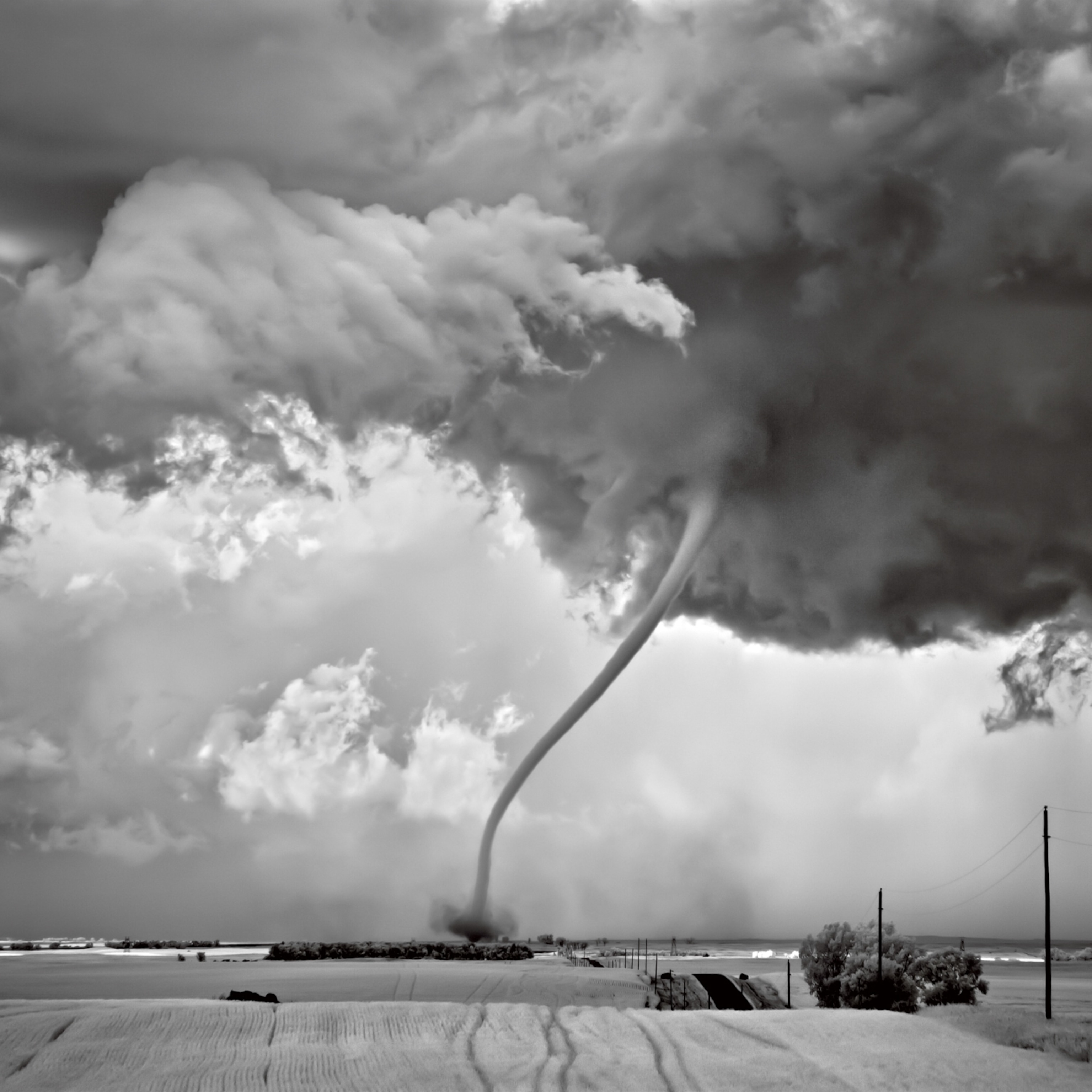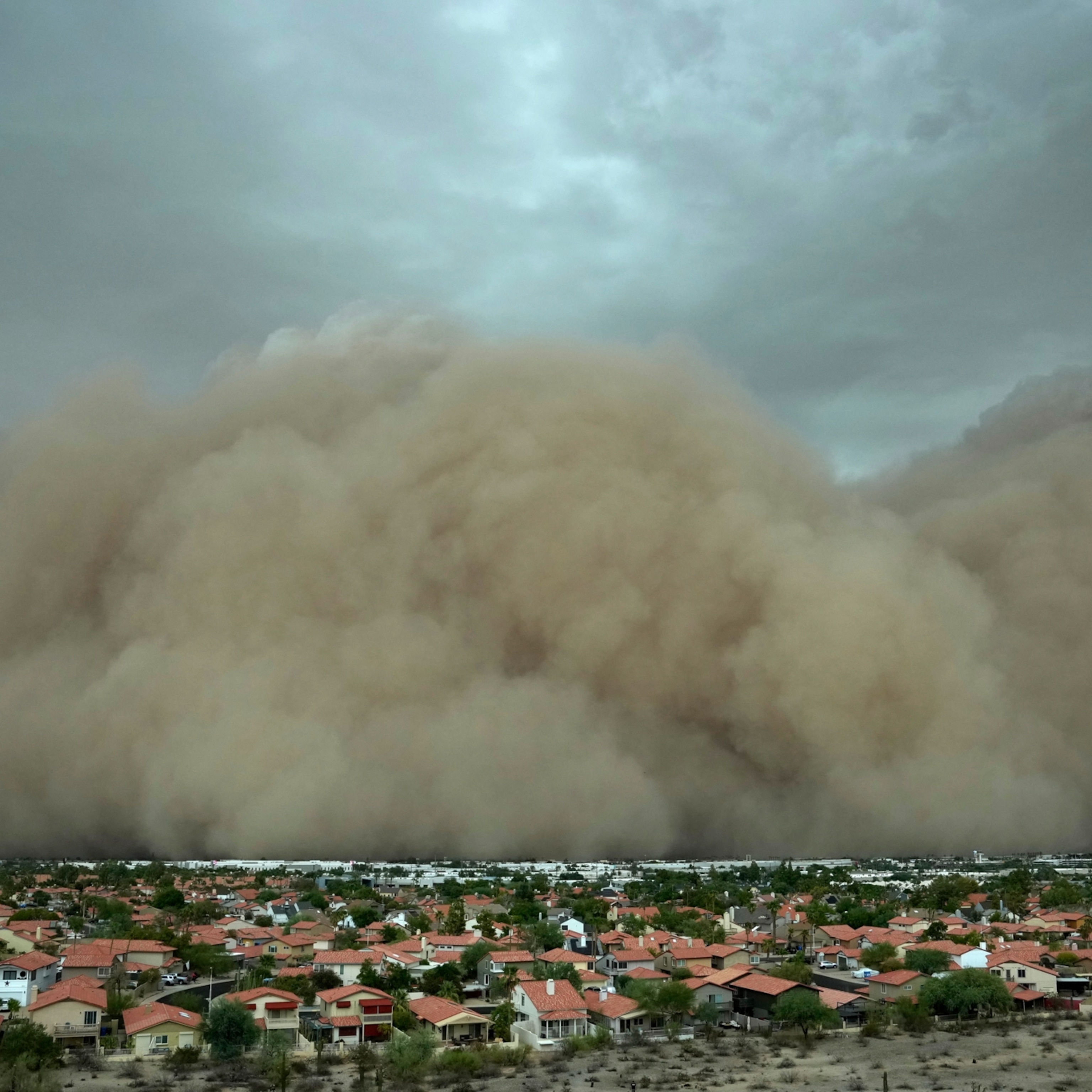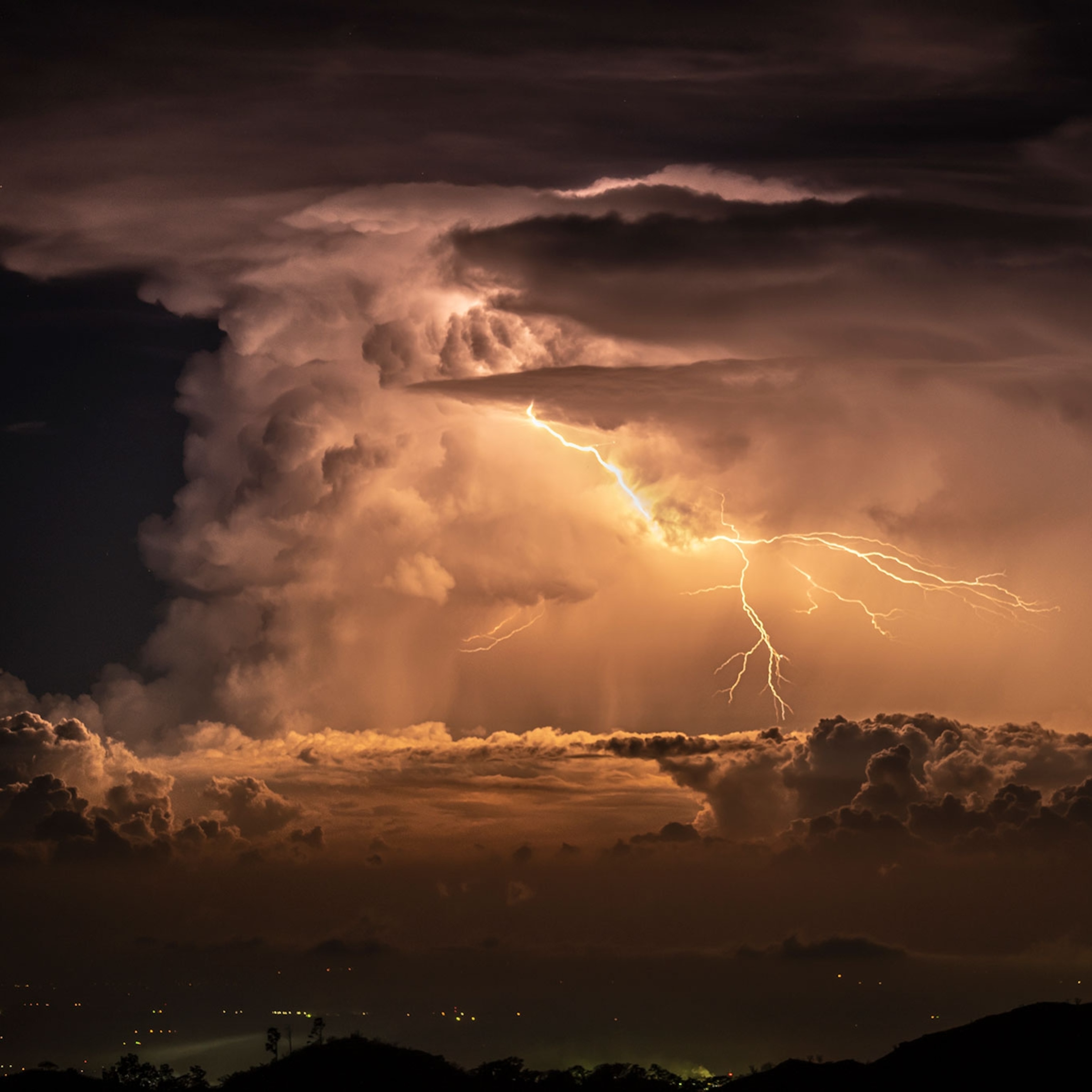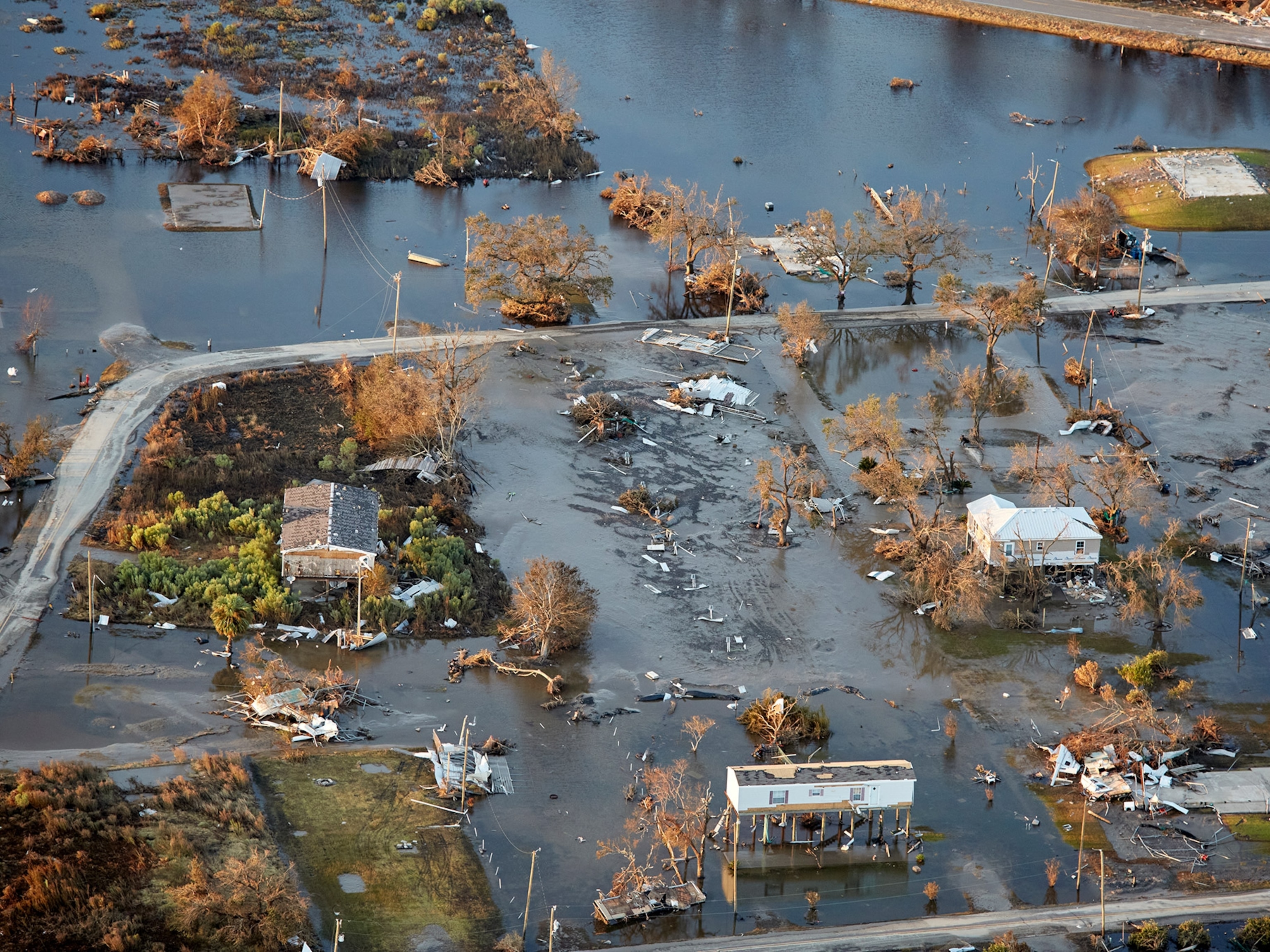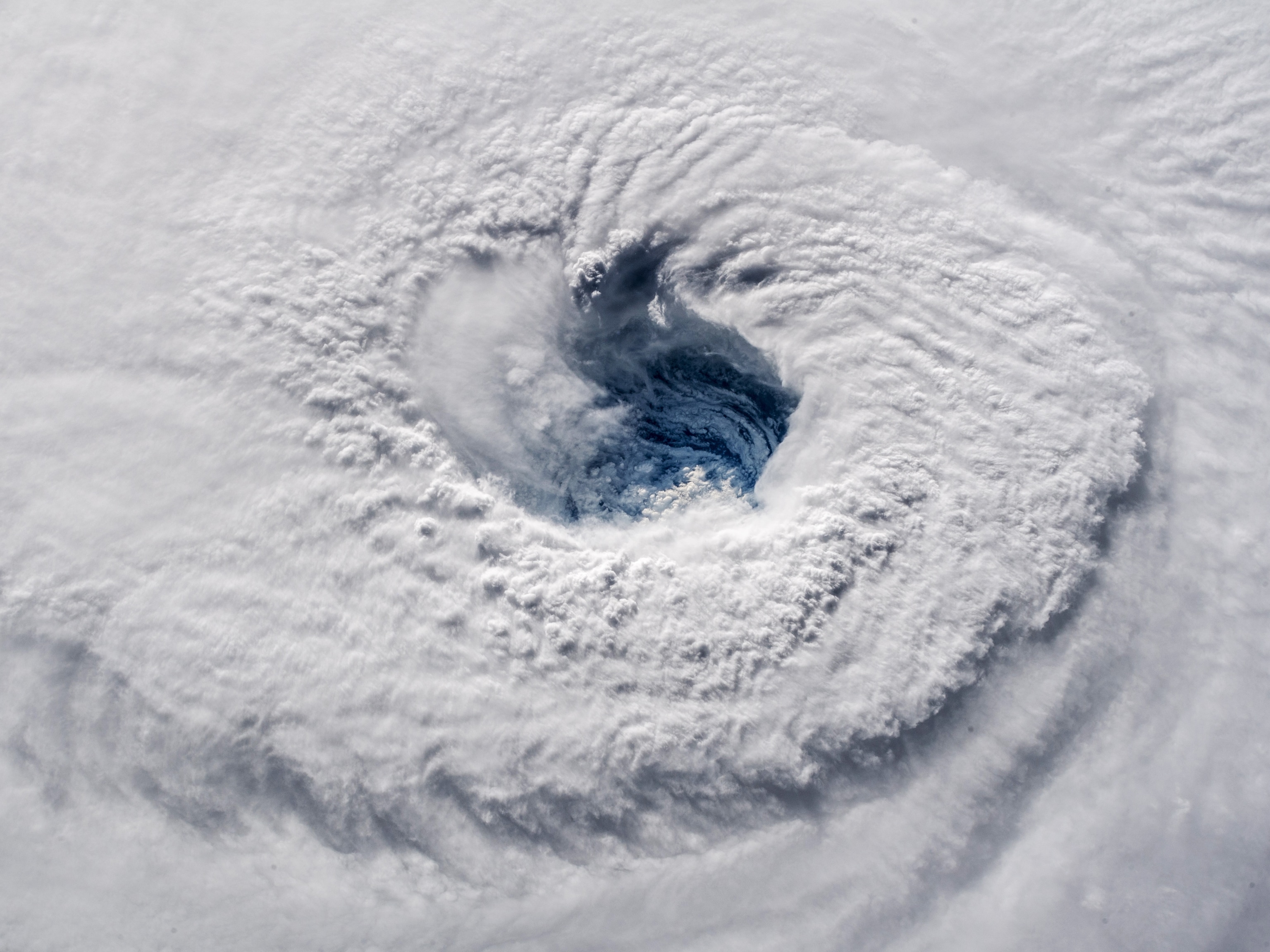
Wildfires can intensify destructive storms half a continent away
Blazes in the western U.S. can lead to bigger hail and more intense rains as far as 1,500 miles away, new research finds.
Wildfires in the western United States are getting bigger, stronger, and worse as climate-fueled drought and unprecedented heat push them to new extremes.
But their impact isn’t just confined to the West. A new study shows that the fires can influence weather far beyond the burns’ bounds. Heat, ashes, gases, and other tiny particles they shoot into the air affect large-scale weather patterns—and can end up making rain and hail storms hundreds of miles downwind as much as 38 percent more intense.
It's a stark illustration of how connected different climate-impacted regions really are, says Jiwen Fan, a scientist at the Pacific Northwest National Laboratory and one of the lead authors of the study, published Monday in Proceedings of the National Academy of Sciences. “It’s really quite dramatic how much more damage can be caused with that increase,” she says.
Fires change weather near and far
As wildfires have intensified in recent years, scientists have begun to catalog the ways the massive events influence weather—but so far, all have looked at either enormous or relatively small scales.
Smoke plumes that shoot into the high atmosphere can affect temperatures hemispherically or even planet wide; the enormous 2019-2020 wildfires in Australia, for example, spewed so much smoke as high as the stratosphere that it acted like a volcanic eruption, blocking out incoming sunlight and ultimately cooling the Southern Hemisphere for years afterward.
Others have looked at how conflagrations produce dramatic, sometimes eye-popping weather displays nearby. Teams have driven instrument-loaded trucks right up to fire tornadoes that spin up out of intense blazes to understand why they form, or flown planes through pyrocumulonimbus storm clouds that tower high overhead, often shooting out burning embers and bursts of lightning.
But during 2018’s devastating fire season in California—at the time, the worst on record—Jiwen Fan started to wonder: Could the ever more frequent and intense fires raging in the western United States affect weather not just right next door, but as much as 1500 miles downwind?
Major weather patterns in the U.S. tend to travel from west to east along with the prevailing winds. Fan noticed that just a few days after California’s Carr Fire kicked off in mid-July—shockingly early in the expected fire season—a massive days-long storm pummeled the High Plains states like Wyoming and Colorado with flooding rains, baseball-sized hail, and 90-mile-an-hour gusts. The storm caused over $100 million in damages. Was it possible the two were connected?
Her team had the exact right tools to investigate the question. First, they dug through 10 years of weather and fire data to find examples of other big conflagrations occurring right before major storm events. The pairing was actually quite rare. That’s because storm season in the Central U.S. is centered around early summer; in the past, that season was winding down by the time wildfire season ramped up in August and September. But wildfires have been igniting earlier and earlier, nudged forward by climate change-driven drought and heat. Since 2010, the team found several big central storms that overlapped with major Western fires.
They focused on a 2018 storm. Using a weather model that added in the effects of heat and smoke emitted from the burns, they simulated days-long storm event in several different ways. As the real situation had been, with massive fires burning in the West; as if those fires didn’t exist; and another set of experiments that included and excluded the effect of some smaller local fires that had been burning at the time.
The differences were dramatic: The combined impact from the faraway western fires and the local ones boosted the occurrence of heavier rainfall—where more than about 0.8 inches of rain fell in an hour—by 38 percent. The outbursts of big hail, with hailstones larger than two inches—nearly the size of a baseball— happened 34 percent more in the fiery conditions. But the far-off fires had a much larger effect.
“The impact is very significant,” says Fan. “That was a little surprising.”
How do fires affect storms?
By probing the model results, they could also tease apart two key reasons the fires had such a dramatic effect downwind.
They saw an extra-high-pressure zone around the western wildfires—likely influenced by huge releases of heat, gases, and particulates from the burns. Air flows from high pressure to low; the extra-high pressure in the west amplified the winds flowing east toward the storm zone. And while air moisture right near the fires was dry as a bone, it was normal or even a little higher downstream. The extra-strong winds carried along that rich seam of moisture straight into the storm zones.
Extra-wet air and strong winds are both key ingredients to fuel strong thunderstorms. As wet air rises, water transitions from gas to droplet, a process that releases extra heat into the air around it. And since warm air rises, any extra heat makes it rise faster and more explosively, squeezing yet more heat—and rain—out. Strong winds can often increase the twisting forces in the atmosphere, strengthening storms.
There was a second fire effect, too. The thick blanket of ash and other particles floated downwind into the storm zone. Water condenses out of air more easily when it has something to latch onto: More particles offer more chances to attach. And if those particles get sucked into a strong updraft, shooting into ever-colder air above, they have more chances to form hail. Previous research has demonstrated that smoke particles often induced bigger hailstones in the Central United States.
“It’s not that the smoke is causing the event, but it’s intensifying it,” says Pablo Saide, an atmospheric scientist at UCLA who was not involved in the research. It’s a good example of how climate change is influencing weather, he says—not by adding more events, but by changing the character of the ones that would still have happened, usually making them worse.
The research also underscores how climate change is linking far-apart communities, he says: Events like western wildfires are “affecting a much larger population now.”
Lots more to untangle
Wildfire activity is projected to increase further with climate change. Already, California’s fire agency has warned that there is no longer a wildfire “season”—blazes are possible and increasingly common all year. Thunderstorm seasons are also lengthening. With more opportunities for overlap, the possibility of fire-strengthened storms also increases.
There are still many threads to untangle about exactly how these processes work and how significant the effects could be. Mike Fromm, a meteorologist with the Naval Research Laboratory, wants to see a much more detailed exploration of both the continental-scale dynamics and the details of the rain and hail production. “There are a lot of questions about how that dance occurs, between the environmental pollution and the thunderstorm when it pops,” he cautions.
But crucially, the concept that what happens in the fires doesn’t stay in the fires is becoming clearer. Rebecca Buchholz, an atmospheric scientist at the National Center for Atmospheric Research, studies the health effects of wildfire smoke traveling far from the parent fires. To her, this study emphasizes that western fires produce “a huge additional downwind impact on the continent—not just locally in the western U.S. They’re having so much more impact.”

